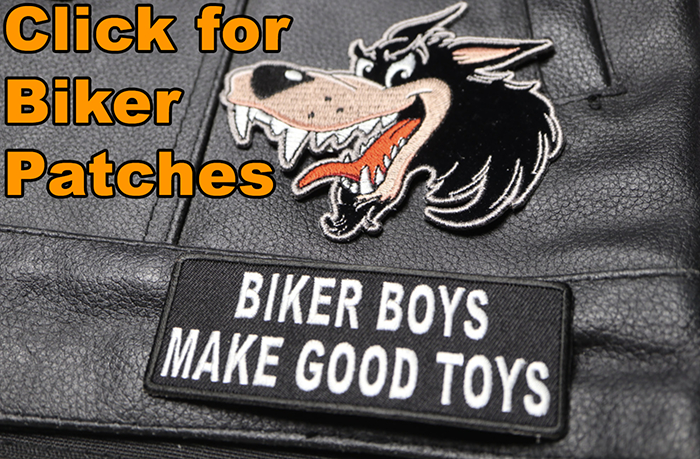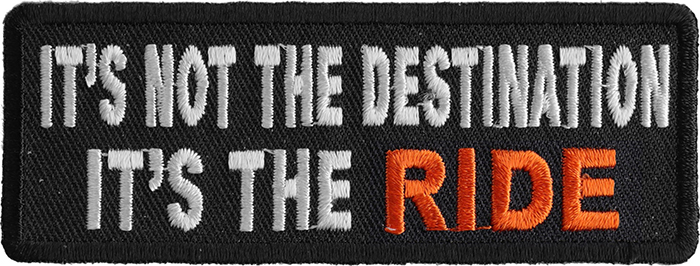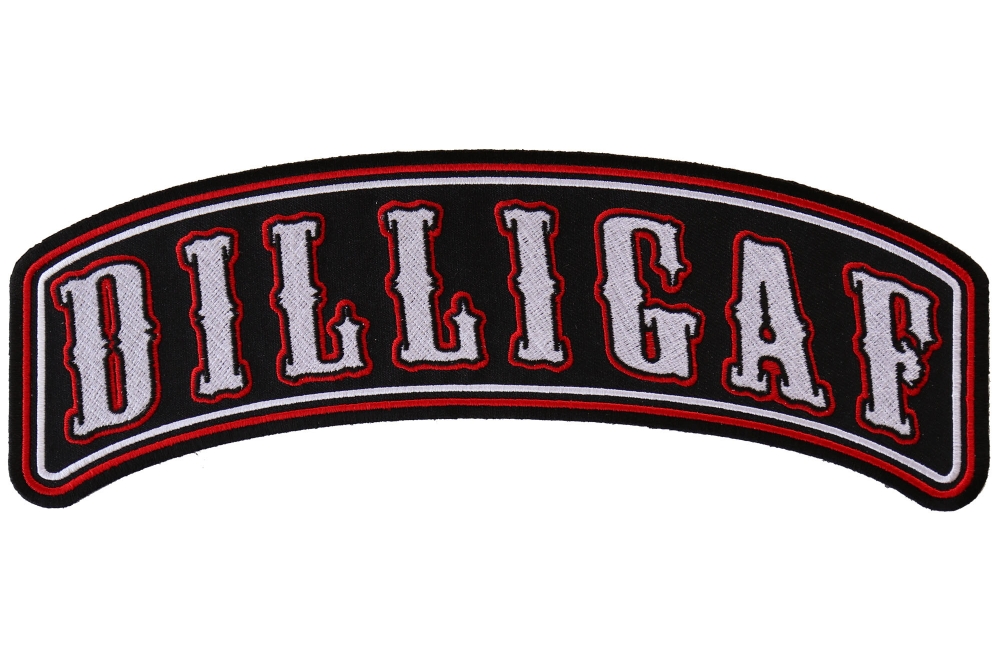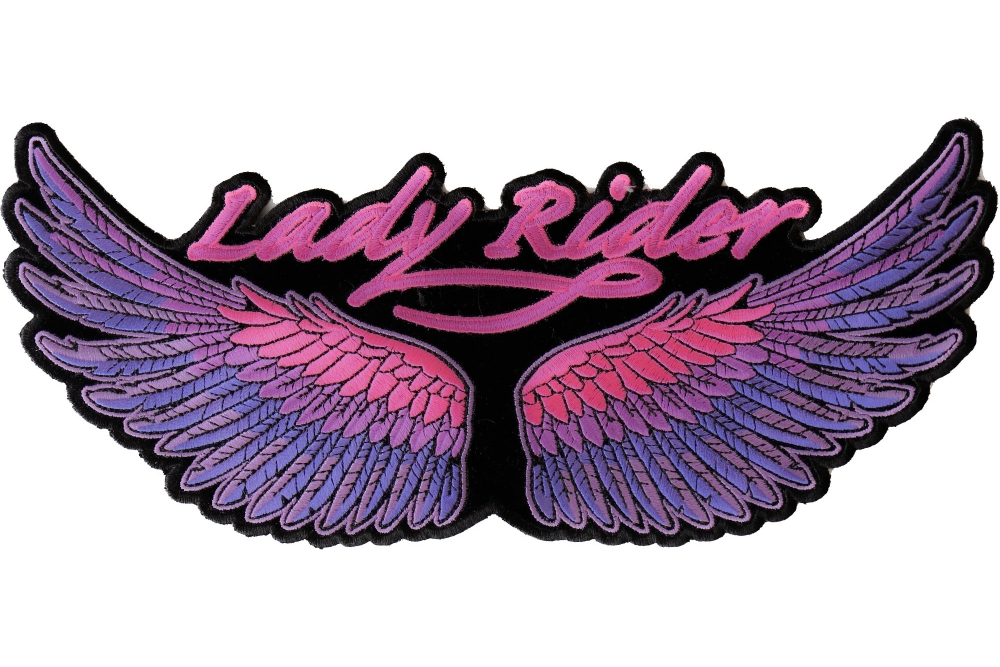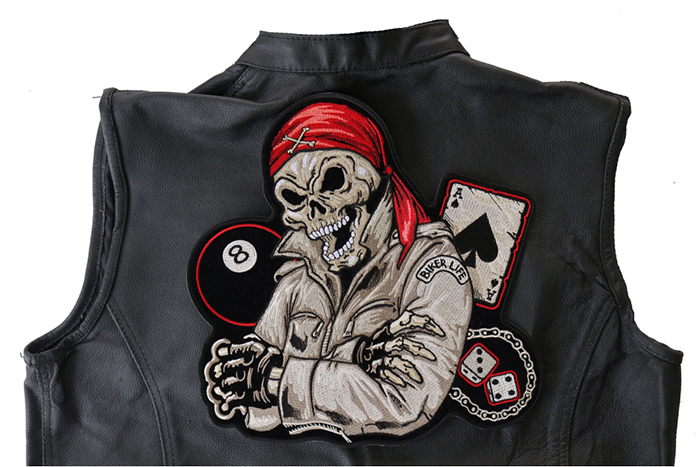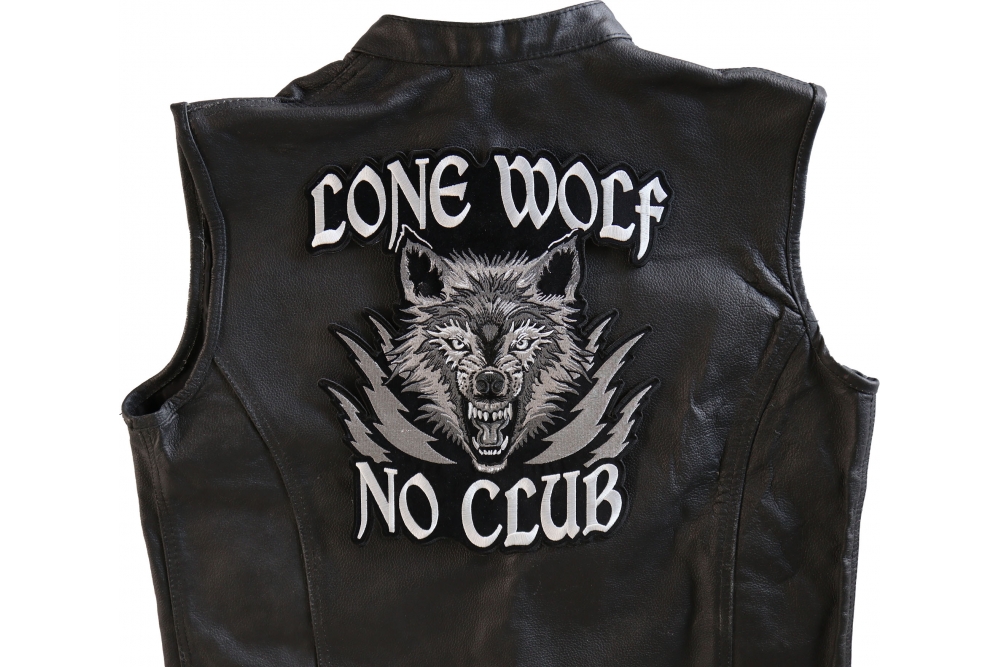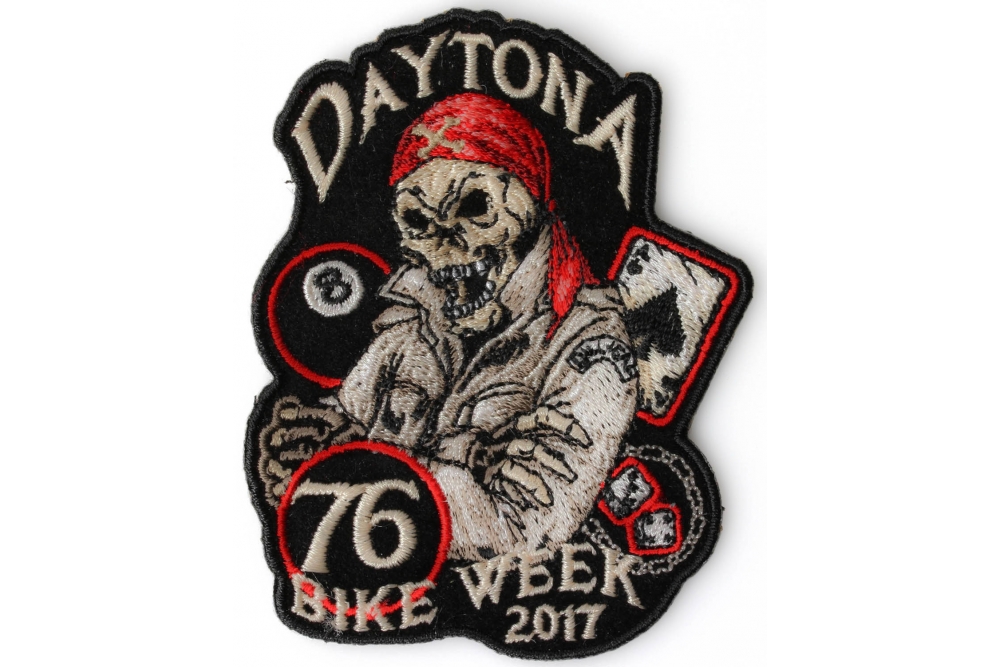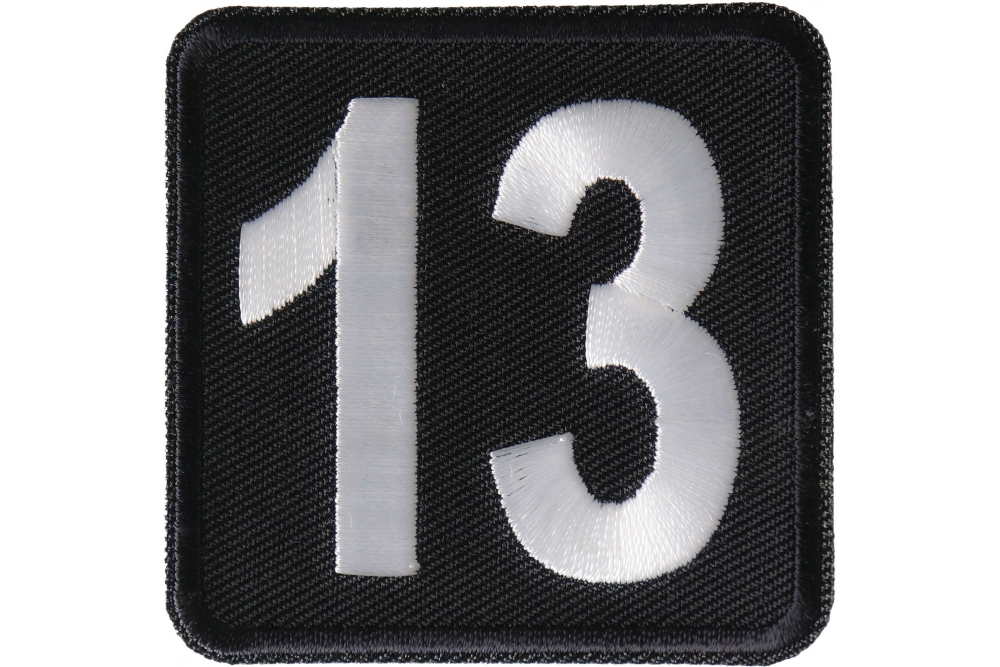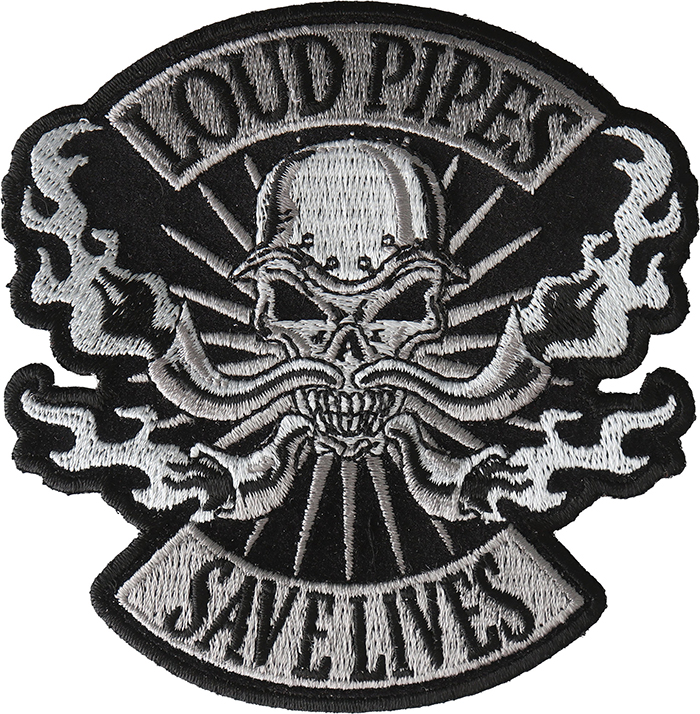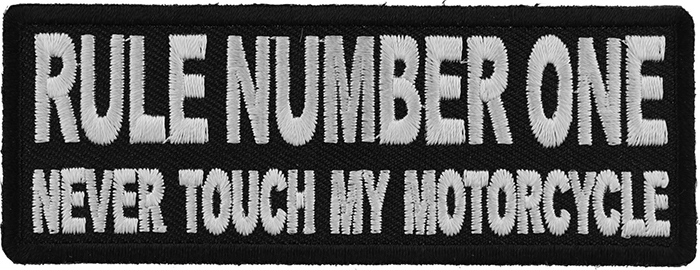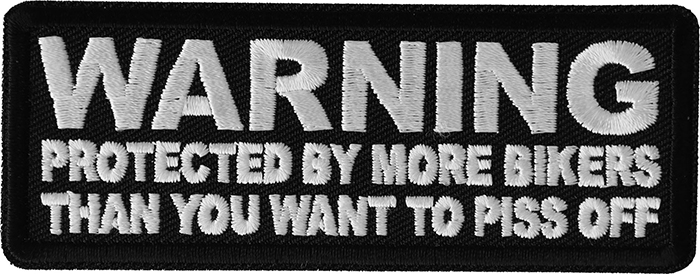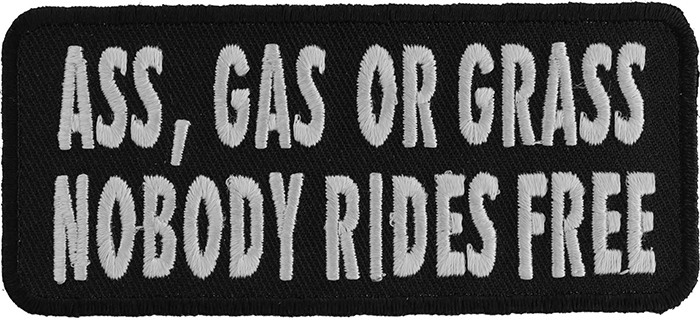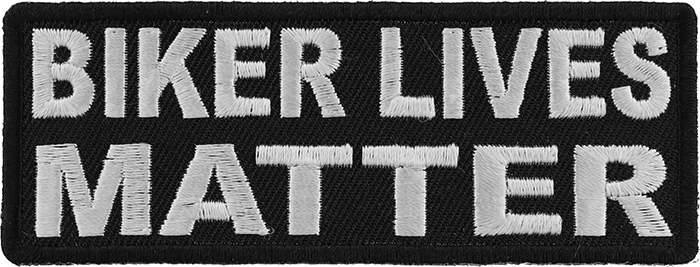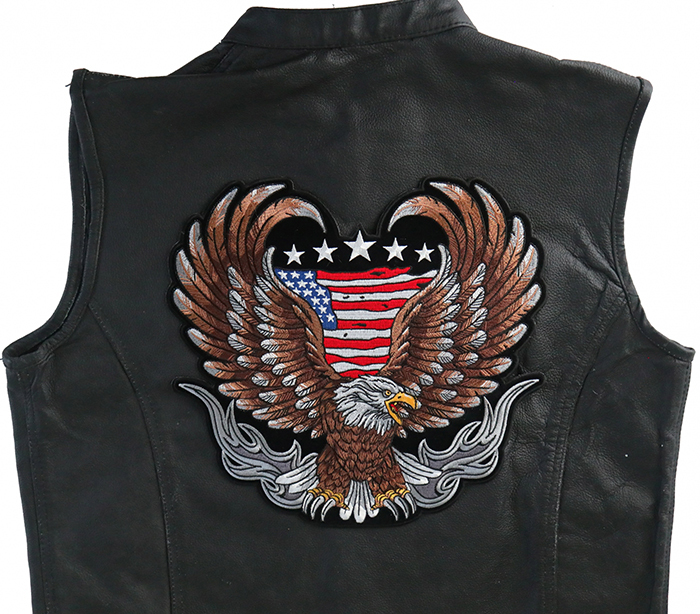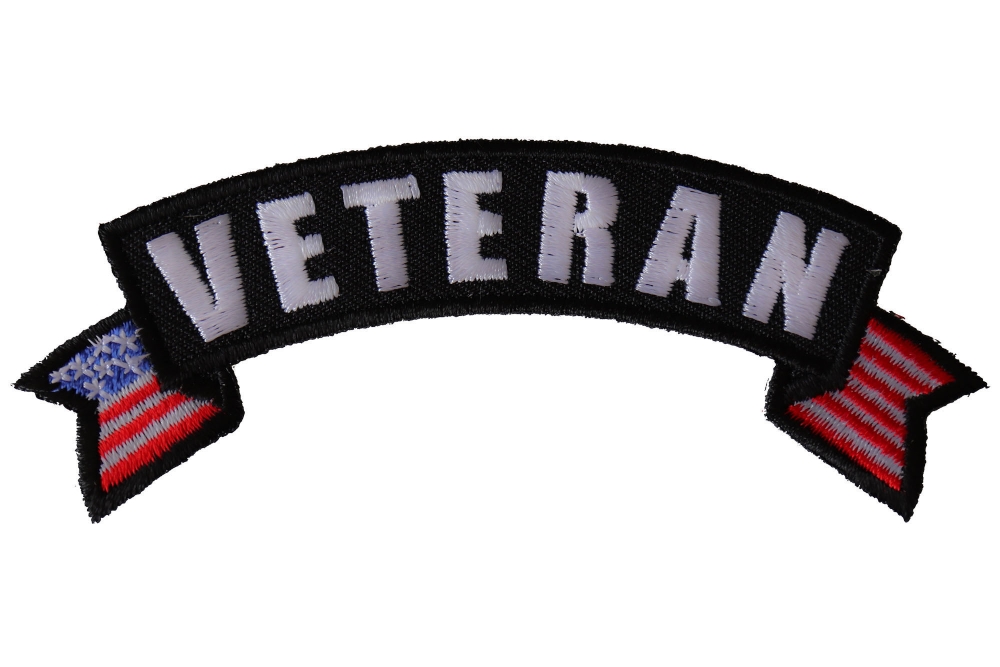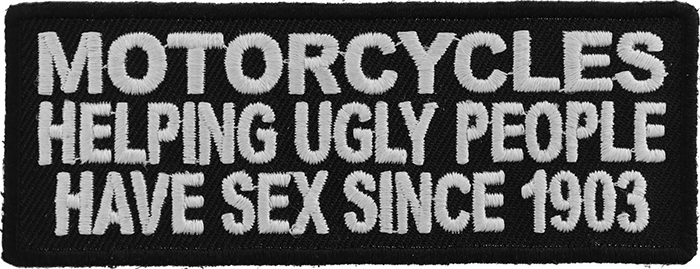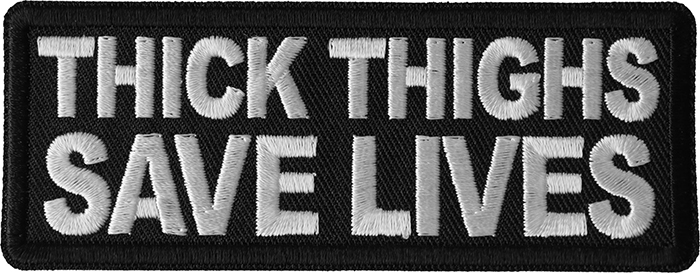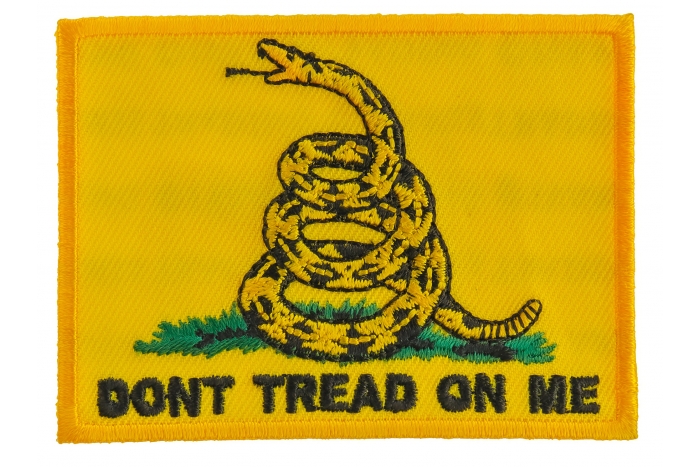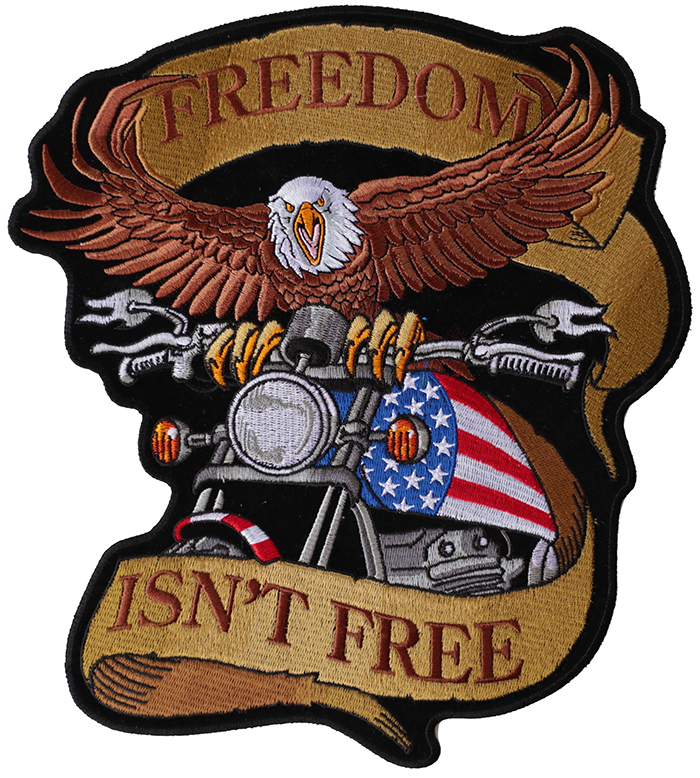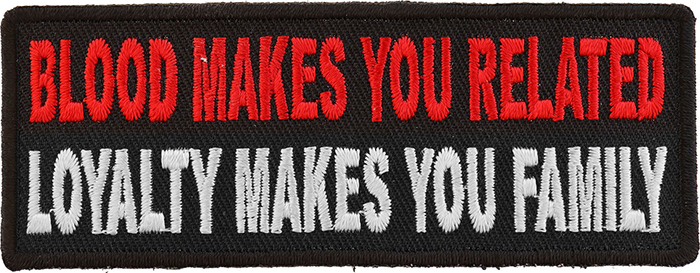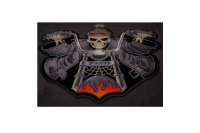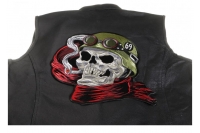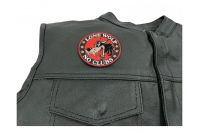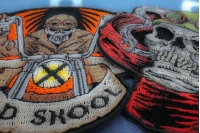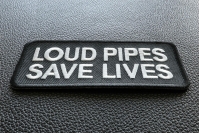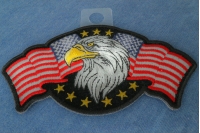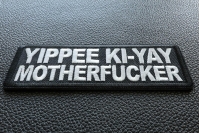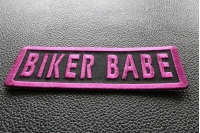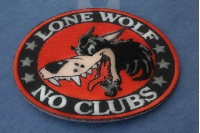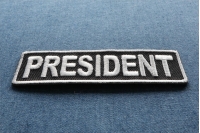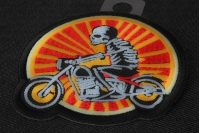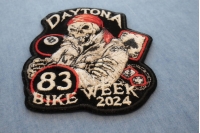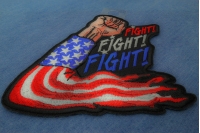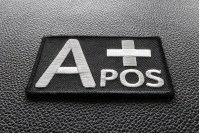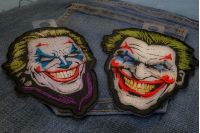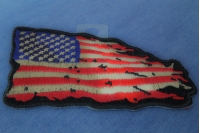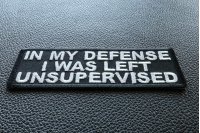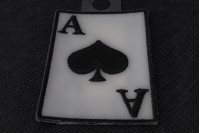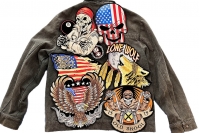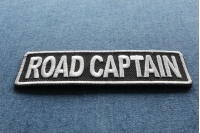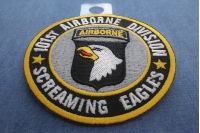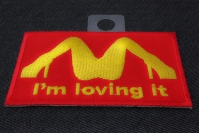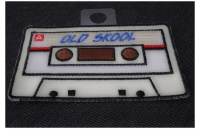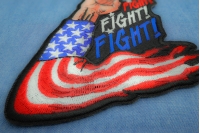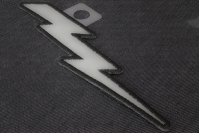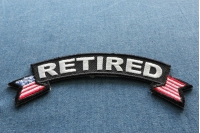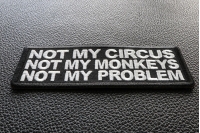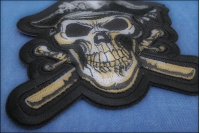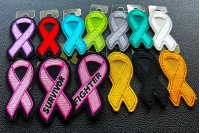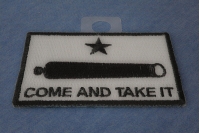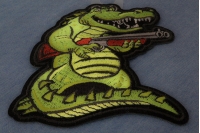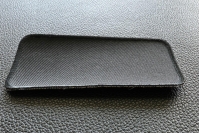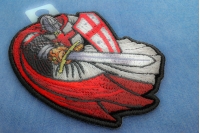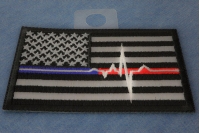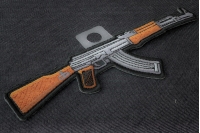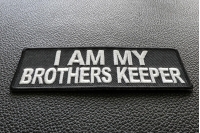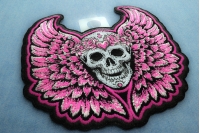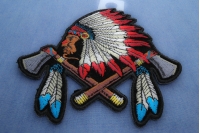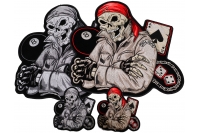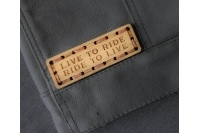The Ultimate Guide to Biker Patches Meaning & More
Bikers can often be seen wearing jackets and vests adorned with colorful patches. While these patches are used for decorative purposes, they may also have special biker patches meaning used to convey a message only known to other bikers. For instance, a patch can tell you about the club a certain rider belongs to and some of the activities that they may have participated in. A biker club often has its own motto, members and a clubhouse. Without a biker patch, one cannot be recognized as a serious motorcycle club member. This guide seeks to shed light on some of the frequently asked questions about biker patches.
|
Jump Links |
|---|
What Do Biker Patches Mean?
There are a few different MC patches meanings. A motorcycle club patch can come in three variations: single, two-piece, and three-piece, so named based on the number of elements it contains. For example, a three-piece patch has three elements – Center Logo, Top Rocker, and Bottom Rock.
One-Piece Back Patch
Some riders have one-piece biker patches meaning that the biker belongs to a riding club or motorcycle organization. These patches contain different information, such as the club name, logo and location in some cases. They also indicate a group that has been sanctioned by the American Bikers Association.
Two-Piece Back Patch
A two-piece biker patch is used to signify a club that is in transition. It means that the members are awaiting approval from the club to become a member of the sanctioned motorcycle club, which then earns them the right to wear the three-piece patch. A three-piece patch, on the other hand, is worn by bikers who have been approved by a club and signifies a true “MC.”
Three-Piece Back Patch
Some motorcycle clubs, especially those that have adopted rigorous standards about who becomes a member, use three-piece biker patches to set them apart from other clubs. The centerpiece often carries the club’s emblem, while the top patch is the name of the club. The bottom rockers identify the location of the club. All the three patches are known as “colors” together.
The 3 piece patch is normally used to identify the club as a traditional motorcycle club, shortened as MC. This type of patch is used to signify that the club is not sanctioned by the American Motorcycle Association but is not necessarily a 1% club. It also signifies that the club has been given approval by the dominant club in the area or state.
This type of patch is awarded in three parts, giving the prospective member the privilege to wear the full biker patch. This is someone who is eligible for membership and who has been invited to attend the runs and events organized by the club but doesn't wear part of the patch. If the person is sponsored by a full member of the club and approved by other club members, he may wear the patch of the members and is also allowed to have the top rocker as well as the club insignia. From here, his colors are complete, which gives him full membership to the club.
The traditional three-piece patch motorcycle club adheres to strict established protocols, a code of conduct and traditions. Motorcycle clubs differ from other types of motorcycle organizations or riding clubs because they (motorcycle clubs) normally have a prospecting time before one is allowed to join in and wear the colors of the group. In most cases, club colors have MC printed on the rocker or as an additional rectangular, small patch.
A nomad, also known as a rocker, is only worn when a member continues to live a lifestyle that adheres to the definition of the word “nomad.” This is a person who has no fixed address. In the ’80s, many national organizations joined other rockers with their patch to avoid possible confusion within the biking community. The Blue Knights or The Harley Owners Group (HOG) are perfect examples of these.
Activity patches
Bikers who attend major rallies, such as the ones in South Dakota, are given patches known as rally patches. Such patches may also be given to motorcyclists who participate in charity events. As a show of patriotism, some bikers display the flag of their country of origin or the country of origin of their bike during such events. Others also choose patches that tell about their military service.
Outlaw biker insignia
In most cases, self-designated “outlaw” motorcycle clubs wear patches with the shape of a diamond and a log reading “1%.” This is because they consider themselves apart from the 99% of motorcyclists who are allegedly represented by the American Motorcycle Association. Certain patches worn by other bikers may also indicate that the wearer may have engaged in criminal or sexual activities. One of the best-known patches of this type is the number 13. Number 13 is said to stand for the 13th letter of the alphabet, M, and which is used in reference to methamphetamine or marijuana.
What are Biker Patch Rules and Etiquette?
In all motorcycle clubs, bikers are required to adhere to patch rule etiquette at all times. These mc patch rules are guidelines that determine their general behavior while wearing patches of their respective clubs. For instance, a biker may wear the colors of his or her club outside of his or her territory but never within the territory of another club.
Some clubs also do not allow their members to wear colors while driving. Besides that, a biker who has lost his or her membership from the club must surrender his or her colors. Similarly, a biker who leaves the club voluntarily or unannounced must leave his colors behind. This is done so to prevent such bikers from wearing the patches as old army uniforms.
Clubs also have different rules regarding presentation. For example, most clubs require their members to wear the patches on a sleeveless vest. Also, never, under any circumstances, should they touch the colors of a member. This is because club members take a lot of pride in their colors. This is true considering the rigorous and time-consuming process they have to go through to earn their colors. In this respect, most of them treat their colors with respect and will do anything to defend their colors at whatever cost.
Besides the above-mentioned, never ask a member to borrow his jacket or wear his jacket with their colors on it. The only time a non-member is allowed to wear the club’s colors is when the colors are worn by a female passenger riding with a member of the club. However, this rule varies from club to club.
Members may wear t-shirts, jewelry, and tattoos that may incorporate logos, acronyms and symbols associated with the club. For instance, club members may wear support jewelry or t-shirts that incorporate a set of symbols, but they must retain the dominant color scheme of the club.
Always ask to take a picture of the club member or their bike. If permission is granted, which in most cases is provided you asked first, never take a photograph of the plate number. If you start taking pictures of the biker on the road, don’t be surprised if you get greeted with a solo finger salute.
If the biker’s colors are removed in the Emergency Department during a medical procedure, staff and physicians of the medical facility should treat the biker’s colors with utmost respect or risk a hostile reaction from the biker and his associates.
Considering that there are many biker clubs in the United States, it would be impractical for every physician to memorize every specific logo associated with each club. However, it is important for physicians to be conversant with the hues worn by each and every active biker and his club. Most biker clubs have two hues associated with their respective club insignias: red and gold.
Additional FAQs
Now that you know all about biker patch meanings, let’s look at some other frequently asked questions about biker patches.
What Are Biker Patches?
Biker patches are worn by members of motorcycle clubs as a form of message to let people know which clubs they belong to. Bikers often place these patches at the back of their vest and are laden with motorcycle club patches meanings and tradition. These patches are not only used to identify which motorcycle club a biker belongs to, but also to add more decoration and promote the biker’s character.
Motorcycle clubs are very diverse and include clubs for veterans, police officers, families and firefighters, among others. Quite often, motorcycle clubs adhere to stringent rules established by their clubs, and members often attend mandatory meetings and pay dues.
There is no applicable rule in designing a biker patch. However, there is a difference between biker clubs and motorcycle associations where the latter only has two patch designs while the former has only one patch design. A three-piece design is often regarded as the outlaw motorcycle club patch. Clubs that have three or more patches are not recognized and do not form part of the American Motorcycle Association.
In the biker world, members of motorcycle clubs are often considered to have “earned” their patch. In other groups, such as RCs or riding clubs, patches are sometimes given to members without a strenuous membership process being followed. In some cases, they can also be purchased. The type of club a biker belongs to is often identified by a small rectangular or square patch at the back of the vest.
What are Biker Back Patches?
Back patches are large patches a biker places on the back of his vest or jacket, and which are centrally placed among the other small, personalized patches that one adds over time. Back patches are available in different styles, shapes and sizes, and they are the main “stage” of a biker’s motorcycle leather jacket.
A biker can use a back patch to illustrate his distinctive character. Any biker who wants to make their outfit appear a little stylish can choose a biker pack from a huge range of collections. Being the main piece of who you are as a biker, you can use back patches to identify yourself as part of a club, lone wolf, and your mission. Most importantly, you can also use these patches to portray your personality for the whole world to see. Just like any other outfit out there, the purpose of a back patch is to portray who you really are.
From time immemorial, bikers have used these patches to portray their distinctiveness and what they truly believe in. The coarse appearance on most back patches is only a way of illustrating the distinctive characters of that person but does not, in any way, indicate that they are allied to any group or gang.
What are Biker Rocker Patches?
Biker rocker patches mostly reflect the sect-like symbols of a gang’s subculture. They can also provide vital information about the social history of gang members, such as drug use, past incarcerations, and allegiance to the gang, among other things. Central to the attire of outlaw bikers is the collarless and sleeveless jacket that identifies a specific club to which a biker belongs.
The biker patches, or “rockers” that indicate full membership to where a biker belongs to are embroidered on the colors of the biker and are regarded with great reverence by all members of the club. The back of the biker’s colors often has a top rocker bearing the name of the club, a center patch that indicates the logo of the club, and a bottom rocker that carries the location to which the biker belongs.
How Do You Put on Biker Patches?
The best way to put a patch on your jacket is to sew it on. Even though you can also glue your patch on, this is not the best choice because the glue can discolor the jacket. This is also not a permanent solution because the patches will start coming off with time. So, how do you put on these patches? Let’s find out.
First, if you have a renewable liner, it is advisable that you take it out. Make sure that the thread is 100% polyester or 100% nylon with no cotton at all. This is important, considering that cotton reacts with tannin in most leather jackets after it has been tanned, meaning that it will rot. Most of the threads in the market have cotton in them, so make sure that the one you have has none of it at all.
Secondly, try to get a thread that matches the color of the patch’s border or a clear thread if you can get one. You also need a thimble and a heavy-duty needle for the work. Keep the lining smooth and centered to make sure that it doesn’t bind or tear. The best way to hold the patch in place is by making several stitches around it or by looping a scotch tape around it. Stick it on the back of the patch and press it tight. Once you have stitched about a third of the way around, pull off the tape. One thing to remember while stitching is to start and end the threading from the inside of the jacket, as this conceals the knots you have made, meaning that they will not be visible from the outside. Also, remember to keep every stitch close because this way, the patch is unlikely to get ripped off. Most shops have different types of patches, so you can’t run out of options.
What are Biker Patches Made of?
Most biker patches are made from heavy material such as heavy cotton or denim, as these are long-wearing and hold on well to the elements. Different patch designs required different percentages of embroidery design in order to achieve the intended result. More detailed designs often require more embroidery, while simple ones and the basic text patches do not require a lot of embroidery. In the world of bike patches, embroidery coverage is broken down into three categories, as listed below:
50% embroidery
This type of embroidery involves simple designs with simple text paying and sayings patches. Also, at least 50 percent or more of the twill background is visible in this type of embroidery, with less than 50 percent consisting of embroidery. It also costs less, meaning that it is suitable for most designs.
75% embroidery
This is by far the most common type of embroidery used when making biker patches. In this type of embroidery, 50 percent or more contains embroidery, with less than 50% of the background visible. The cost of this type of embroidery is low to average. As such, it is suitable for most designs.
100% embroidery
This is the highest patch quality with the greatest amount of embroidery. 100% of the patch contains embroidery with very little to almost no twill background visible. Even though it is the most expensive patch, it provides the most accuracy and detail. More intricate designs often require this type of embroidery.
All materials used in making biker patches should be manufactured with adhesive backing to allow for iron-on application. On the same note, each patch should have a seal across its backside to provide long-lasting benefits as this protects the stitching and embroidery, thereby increasing the quality and durability of the patch. Patches should also be made with a distinct embroidered border, as this makes sewing simple and effortless.
The patch should also be embroidered using the best machine and technique. This is beneficial because it provides color vibrancy, the most detailed stitching, and color accuracy for the part embroidered. To ensure long-lasting enjoyment, the patch should be machine washable, colorfast and durable.
Can I order Custom Biker Patches?
Some riders prefer wearing custom-made biker patches, especially if it is allowed in their respective clubs. As such, it is possible to order custom patches made to suit your budget. Custom patches allow a rider to wear something that shows they are part of something and that they stand for something.
You can place an order for custom biker patches and have them delivered to you at a fee, of course. These patches are made to the highest standards possible, and every little detail you want will be included to make them as personalized as possible. These patches are made using the finest quality twill and embroidery, so they are both great-looking and tough enough on the outside world. The makers of these patches use state-of-the-art machines to produce top-notch patches at very competitive prices.
With so many companies offering custom rider patches at very affordable prices, you can order your custom patch by providing the details you would like to be included and paying the fee, and then it won’t be long before you receive it. If you have picked out what you would like your custom patch to look like but are not sure about the final design, you can just call the design company to help you with the best design, as this will save you a lot of time. The company will let you look at their previous work so that you can see for yourself specifically what they are capable of doing. To help you make an even more informed decision, you can browse through their client testimonials before you select your preferred custom rider patch.
